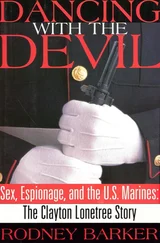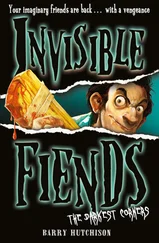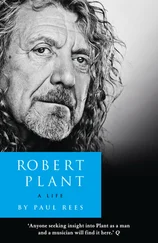The most significant change of all, the thing that really brought a lump to the throats of so many and which made Sheene’s eventual victory over Gardner even more remarkable and emotional, was the recently divulged fact that Barry had cancer. This was the first time he had appeared in public since being diagnosed. The poignancy of his win was not lost on the 80,000-strong crowd who realized they were probably witnessing Sheene’s last-ever race.
Barry had been diagnosed with cancer of the oesophagus and upper stomach just a few weeks earlier, and there were more than a few tears shed as he crossed the line, removed his helmet and waved to the masses on his victory lap. He had come a long way to get to Goodwood in the sleepy West Sussex countryside – from the other side of the world, in fact. An 18-hour direct flight from Australia is gruelling enough for most passengers, never mind one suffering from cancer. But to ride flat-out against some supremely talented opposition, including former world champions Gardner and Freddie Spencer, and to eventually take the race win gave all his fans reason to believe that this time cancer had picked the wrong body. Sheene was a fighter and a winner; he had proved it many times before. Surely, if anyone could beat the most dreaded of diseases, it was he.
When news of his illness broke, Sheene shocked fans around the world by announcing he would not be undergoing invasive surgery or chemotherapy to treat his condition. Instead, he would rely on alternative cures and a special frugal diet. Sheene had already lost a stone off his slight frame by the time he appeared at Goodwood, and orthodox oncologists warned that he risked malnutrition by continuing with the diet. But Sheene has always done things his own way, and he was adamant when interviewed by Motor Cycle News : ‘I’m not going to be fighting this in the conventional way. I won’t subject my body to chemotherapy. I’m putting my faith in the natural way.’
Typically for a man who had made a living out of cheating death, Barry put a brave face on his illness and already had his quips and quotes worked out for the media. ‘I don’t like cancer, but it’s growing on me’; ‘If I don’t beat this my wife’s going to kill me.’ These were just two of the lines he bandied about like a stand-up comic living in denial of the very real risk to his life. Sheene also insisted that he wasn’t ‘going to let fucking cancer get in the way of me enjoying myself’ and admitted that his second thought upon hearing his diagnosis was that he might have to miss the Goodwood event. It hadn’t taken long for him to re-establish control, pack a suitcase and catch a flight; he wasn’t about to let down his fans. Anyway, it wasn’t as if fighting for survival was something new to Sheene. In the past he had astounded some of the most respected doctors and surgeons in the world with his ability to recover from serious injuries in unheard-of time spans.
Well-publicized X-rays of his shattered legs from two horrific high-speed crashes played as much a part in making him a household name as any of his victories on the race track. In 1975, his rear tyre blew out at 178mph on the notorious banked section of the Daytona Speedway in Florida. The crash, captured by a television documentary crew who were following Sheene at the time, was shown on TV news programmes around the world, and the incident made Barry famous overnight. His leg was broken so badly it was twisted up behind him, out of sight, making him think he had lost it. He also lost shocking amounts of skin and broke his forearm, wrist, six ribs and a collarbone, as well as suffering compression fractures to several vertebrae. On top of that, damage to his kidneys meant he urinated blood for several weeks. Despite the serious nature of his injuries, Sheene did not lose his 60-a-day passion for strong, unfiltered cigarettes – he preferred the French brand Gauloises, but would happily smoke any brand that was being offered around – and insisted on being wheeled out of the hospital on his bed from time to time so that he could smoke. The hole he drilled in the chin bar of his crash helmet so that he could have a puff on the starting grids at race meetings remains the stuff of legend in bike racing circles, but no one was laughing any more. Sheene’s heavy smoking habit, which had started when he was just nine years old, was one factor cited as a possible cause of his cancer.
The Daytona disaster was the kind of accident that would take ‘normal’ people months, if not years, to recover from. Many would never overcome the psychological scars of remembering every bone-crushing, skin-shredding second of their crash, and would certainly never contemplate getting back on a motorcycle again, but then most people aren’t Barry Sheene. He was racing again just seven weeks later with an 18-inch pin in his left thigh bone, and went on to win his first World Championship the following year.
Crashes are common in bike racing, but big ones like Sheene’s Daytona incident are rare – at least, it’s rare to survive them. Broken arms or legs are frequent injuries, as are abrasions, damaged tendons and general cuts and bruising, but few people live through, or are unfortunate enough to have in the first place, crashes at such extreme speeds. Sheene had not one but two. The second happened seven years and two World Championships later (Barry retained the title in 1977 and was awarded an MBE for doing so) at the Silverstone circuit in England, and it was every bit as bad, if not worse, than the first. Sheene struck a crashed bike which was lying on the circuit just above a blind rise and its fuel tank instantly ignited causing a massive explosion. He had been travelling at around 165mph at the moment of impact. Moments later, another bike hit the wreckage causing another explosion; the resulting carnage resembled the aftermath of a terrorist bombing. Sheene’s already fragile legs had been smashed again, this time more gravely than before, and he also suffered injuries to his head, chest and kidneys.
But while his body was in bad shape, his mental attitude remained as gritty as ever. He told gathered reporters from his hospital bed that ‘Broken bones are a mechanical problem. You can fix them.’ Sheene’s surgeon, Nigel Cobb, inserted plates, pins and a total of 27 screws into his famous patient’s legs and triggered a barrage of schoolboy gags about Barry Sheene and airport metal detectors. But his rate of recovery, once again, was phenomenal.
If Barry Sheene had been a star before his Silverstone crash, he was a superstar after it – and, it appeared, an invincible one. No bike racer before or since has commanded anywhere near the same amount of media coverage as Sheene. It is inconceivable in the current climate of the sport to imagine a national newspaper running a front page story on a bike racer just because he’d met a new blonde girlfriend, and how many other bikers could have starred alongside boxer Henry Cooper in a terrestrial TV advert for a body scent encouraging users to ‘Splash it on all over’? How many racers counted members of the Beatles as close personal friends and dined with Hollywood legends such as Cary Grant? None.
As well as being a world champion racer, Barry Sheene was a marketing phenomenon, gaining exposure for his growing attachment of sponsors in areas even they couldn’t have imagined. He co-hosted ITV’s Just Amazing! show in the eighties and was the star attraction at the 1982 BBC Sports Personality of the Year awards when he rode his new Suzuki onstage and announced he’d be leaving Yamaha to join Suzuki for the following season. He starred as himself in the (very bad) movie Space Riders , and appeared on every major television show of his time from Parkinson to Swap Shop and Jim’ll Fix It to Russell Harty. But perhaps the most enduring legacy of Barry’s fame is that he’s still the only biker the general public as a whole have heard of. Ask any one of them to name a motorcycle racer and they’ll invariably say Barry Sheene. The same thing happens whenever anyone, young or old, is attempting to go too fast or to do something stupid on a two wheeler, be it a motorcycle or a pushbike. The response from policemen and dads alike is always the same: ‘Who do you think you are, son, Barry Sheene?’
Читать дальше












